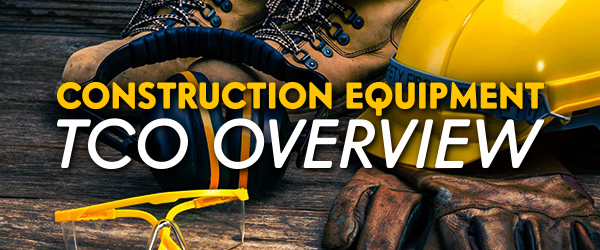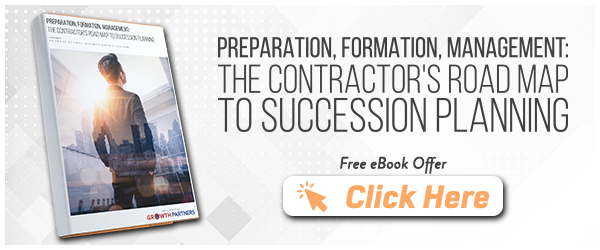As the owner of a construction company, you’re keenly aware of every cent you spend. Cost is likely on your mind often, especially when it appears that you’re spending more money than you should. While it’s essential that you invest in the correct tools and equipment to get the job done efficiently, it’s also important to weigh the effectiveness of every purchase against the amount of money you’re spending.
Cost is more than just about the price you pay when you buy a tool. It’s often about considering whether it’s actually better to rent a piece of equipment than purchase it. Even if you do buy, you still have to consider the overall Total Cost of Ownership or TCO. This is the overall costs you’ll pay while you have and use the equipment, including indirect costs. Many people aren’t aware of these “hidden” costs to equipment, which is why they may end up spending much more on a tool than anticipated. Let’s take a look at everything included in TCO and what it adds to the overall cost so you’ll be able to make a more informed evaluation of equipment before you buy it.
Why TCO Matters
The TCO of each piece of equipment matters more than you may think at first. It indicates how much money you’ll spend over the lifetime of a piece of equipment, and that amount can add up fairly quickly. TCO includes all of the following:
- The cost of all maintenance, repair, spare parts, and replacement parts you’ll have to pay for while you own the equipment.
- The depreciation of the equipment.
- If you financed the purchase of the equipment, the TCO includes the interest and any other financing fees.
- Insurance costs of vehicles.
- Fuel and tire costs
- Operator hours and cost.
When you add all of that into the cost of the equipment, you may find that you’re paying several times what you thought you were. That may not necessarily mean that you don’t need to buy the equipment, but it does mean you’ll need to budget for all of these extra costs. If you don’t, you may find yourself spending much more than you anticipated. If you don’t have the income to balance out these costs, your company could end up in the red.
Renting Versus Buying
TCO plays a large part in deciding if you want to rent a piece of equipment or if you want to purchase it, but it’s not the only consideration. For example, if you need a specialty tool for one job, it’s likely much more cost-effective to rent that item. You may only use it periodically, so it wouldn’t be worth the purchase cost, financing, maintenance, and all of the other expenses. Even if you end up renting that equipment three or four times a year, it may still not be worth the TCO.
On the other hand, anything you’re using regularly is likely worth the investment. Rental costs can add up, and if you’re paying those costs regularly, they’re likely going to exceed the TCO. There’s also the convenience issue. It’s much easier to bring your own equipment to a job site than it is to go to the rental location, put through the paperwork, and make sure the equipment is returned on time.
Making Decisions on Purchases
You also want to take TCO into account when you’re comparison shopping. One piece of equipment might be more fuel efficient or have cheaper parts and maintenance than another but have a higher initial cost. Over a few years, however, it may actually have lower costs overall than a similar machine that doesn’t cost as much but requires more expensive parts and repair costs. Fuel-efficiency rates are another thing to look at when determining TCO. Equipment that uses less fuel may have a lower TCO overall.
Determining TCO
To help you determine the TCO, it helps to make a list of several different costs:
- Fuel costs
- Replacement parts costs
- Insurance and maintenance costs
- How long the equipment will last/will be in regular use
- If you have to send any of your employees for training or certification courses to use the equipment.
- If you’ll be buying the equipment outright or financing it.
- Any delivery charges or transportation costs.
- Any changes that you will have to make to your warehouse or other areas to store the equipment when it’s not in use.
Determining the TCO does, at times, require you to anticipate your future needs. For example, some construction crews are now making use of VR headsets to let clients walk through a virtual model of buildings before work is even started. This equipment does have a fairly high initial cost and training costs, but it could be a worthwhile investment if clients are going to start expecting this technology to be readily available in the future. If they do and you don’t offer it, they may look elsewhere.
At the end of the day, while it may take extra work to calculate TCO, you simply can’t afford to ignore it. Otherwise, you may find that the equipment you thought you could easily afford actually costs much more than your budget can handle.






